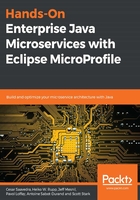
Multi-speed IT
Implementing and delivering applications as fast as possible is not a new requirement. In fact, since the invention of the first computer, increasing efficiency has always been in the minds of computer scientists. High-level programming languages, encapsulation, reusability, inheritance, event-driven design, SOA, microservices, machine learning, and AI, are all concepts that address the challenge of doing things faster. With each wave of new technology, the gearbox adds a new speed requirement to the evolution of how we develop and deliver software. The digital economy has added another high-speed gear to the gearbox.
Businesses need to adapt to the new demands of the digital economy. Not only do they have to create, run, and support traditional-style applications, but also applications that conform to the new demands of the digital economy. They have to support both waterfall and DevOps processes, hybrid cloud infrastructures, and SOA and microservice architectures.
This imposes many challenges on IT organizations, whose processes, people, and technology have all been geared toward the implementation, delivery, and maintenance of traditional-style applications. Many organizations have already embarked on, or are starting, their journey of digital transformation, which addresses the challenges of the digital economy. This journey includes changes in technologies, frameworks, languages, and processes for the development, delivery, integration, and maintenance of applications.
Whether you call it bimodal IT (https://www.gartner.com/it-glossary/bimodal) or a business technology strategy (https://go.forrester.com/wp-content/uploads/Forrester-False-Promise-of-Bimodal-IT.pdf), the fact is that IT needs to deliver faster than ever before on the needs of the business, for both existing and new applications. This means IT needs to also speed up the maintenance and delivery of existing applications while exclusively adopting Agile methodologies for new applications. This does not preclude, however, the need to still use different development processes, release cycles, and support timelines to handle existing applications versus new applications, which is effectively the multi-speed nature of IT.